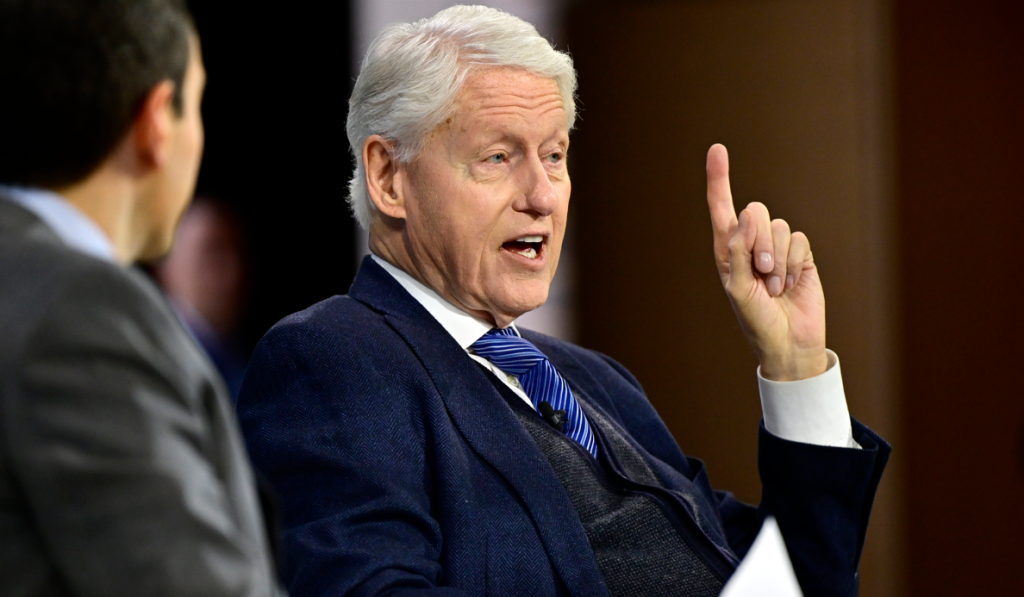Former President Bill Clinton’s hospitalization on Monday, October 12, 2021, at Georgetown University Medical Center in Washington, D.C., sparked immediate concern and interest across the nation and around the world. The initial, concise statement from his spokesperson, Angel Urena, revealed that the 42nd president was admitted for testing and observation after developing a fever. While the statement assured the public that Clinton remained in good spirits and expressed appreciation for the care he was receiving, it offered limited details about the nature or severity of his condition, fueling speculation and prompting a flurry of media inquiries. The news reverberated through social media, with well-wishers and political figures from across the spectrum expressing hopes for his swift recovery.
The scarcity of information in the initial announcement left much room for interpretation and conjecture. While a fever can be a symptom of a wide range of ailments, from relatively minor infections to more serious conditions, the decision to hospitalize a former president, even for observation, underscored the need for thorough medical evaluation. Given Clinton’s history of heart issues, including quadruple bypass surgery in 2004 and a subsequent procedure to open a blocked artery in 2010, concerns naturally arose about the potential connection between his current condition and his past cardiac health. The lack of specific information allowed speculation to flourish, highlighting the delicate balance between respecting patient privacy and keeping the public informed when a prominent figure faces a health challenge.
As hours passed, the media landscape became saturated with analysis from medical experts, political commentators, and former Clinton administration officials, all attempting to contextualize the situation. While some emphasized the importance of avoiding premature conclusions in the absence of official updates, others delved into Clinton’s medical history, discussing his previous health challenges and speculating on potential diagnoses. This influx of information, much of it speculative, underscored the intense public interest in the well-being of former presidents and the challenges of responsible reporting in the age of instant communication.
The wait for further updates from Clinton’s medical team and spokesperson was punctuated by expressions of concern and support from across the political spectrum. President Joe Biden, who served as Clinton’s vice president, reportedly spoke with Clinton and wished him a speedy recovery. Other political leaders, both Democrats and Republicans, issued statements expressing their hopes for his well-being. This bipartisan outpouring of concern reflected the enduring respect and recognition afforded to former presidents, transcending political divisions and acknowledging their continued role in the nation’s life.
Subsequent updates from Clinton’s spokesperson and medical team gradually shed more light on his condition. It was revealed that he was being treated for a urinary tract infection that had spread to his bloodstream, a condition known as urosepsis. While urosepsis can be serious, especially in older adults, the medical team expressed optimism about his response to treatment, consisting of intravenous antibiotics. These updates, while still cautious, provided a clearer picture of the situation and helped to allay some of the earlier anxieties. The information about the specific diagnosis allowed for more informed discussion and analysis, shifting the focus from speculation to the established medical facts of the case.
The episode of Clinton’s hospitalization served as a reminder of the human dimension of public figures, even those who have occupied the highest office in the land. It highlighted the vulnerability that all individuals face in the face of illness, regardless of their past accomplishments or status. The public’s concern for Clinton’s health transcended political affiliations, reflecting a shared sense of empathy and a recognition of his significant contributions to American public life. His eventual recovery and discharge from the hospital after several days of treatment provided a sense of relief and underscored the resilience of the human spirit, even in the face of health challenges. The event also served as a testament to the advancements in medical care and the dedication of healthcare professionals who work tirelessly to ensure the well-being of their patients.

